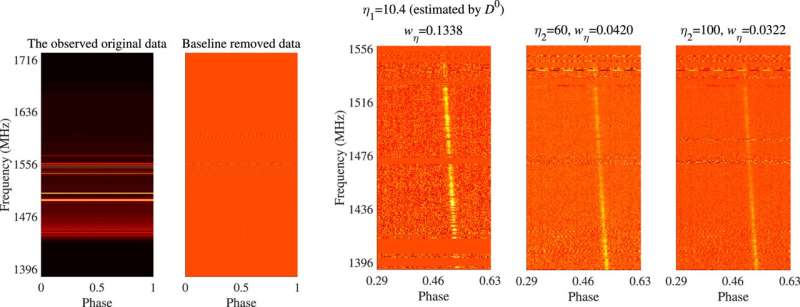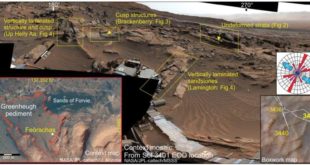
Radio frequency interference (RFI) caused by human communication techniques (e.g., satellites, base stations, and navigation radars) can significantly distort shapes of multichannel time-frequency radio signals. Subsequent astrophysical measurements, such as pulsar timing require finer signal details, therefore, RFI mitigation is necessary.
The current category of linear methods has difficulties in RFI modeling, and the types of RFI removed are limited. The category of thresholding methods is cumbersome due to empirical factors. To overcome these difficulties, a concise and versatile framework to distinguish signals from RFI is needed.
Using pulsar data collected by the NanShan 26-m Radio Telescope (NSRT) from 2011 to 2014, Dr. Shan Hao from the Xinjiang Astronomical Observatory (XAO) of the Chinese Academy of Sciences conducted a study on RFI mitigation through the maximum likelihood nonlinear robust estimators and the sparse promoting fast optimization algorithms. This model has been proven to be effective for most types of RFI typically presented in pulsar signals.
The results were published in the Astrophysical Journal on July 18.
The optimized signal decomposition model can mitigate most types of RFI, reducing empirical factors and increase operability. Especially, the robust nonlinearity can overcome the non-Gaussian characteristic of RFI.
In addition, detailed signal contents are recovered after residual decomposition to compensate for the loss of measurement sensitivity. The processed data have been applied to pulsar timing. In the experiments, the timing accuracy and time-of-arrival estimation have been improved to varying degrees.
“Gravitational wave detection based on pulsar timing is a hotspot in the field of radio astrophysics. We will make further improvements on the calculation efficiency of the algorithm to adapt to large quantities of data and conduct preliminary research for gravitational wave detection based on the timing data,” said Dr. Shan.
More information:
Hao Shan, Robust RFI Excision for Pulsar Signals by a Novel Nonlinear M-type Estimator with an Application to Pulsar Timing, The Astrophysical Journal (2023). DOI: 10.3847/1538-4357/acd170
Provided by
Chinese Academy of Sciences
Citation:
Researchers propose new method for pulsar timing and radio-frequency interference mitigation (2023, August 4)
retrieved 4 August 2023
from
This document is subject to copyright. Apart from any fair dealing for the purpose of private study or research, no
part may be reproduced without the written permission. The content is provided for information purposes only.
 Innovation Discoveries Latest Scientific Discoveries in Innovation
Innovation Discoveries Latest Scientific Discoveries in Innovation



